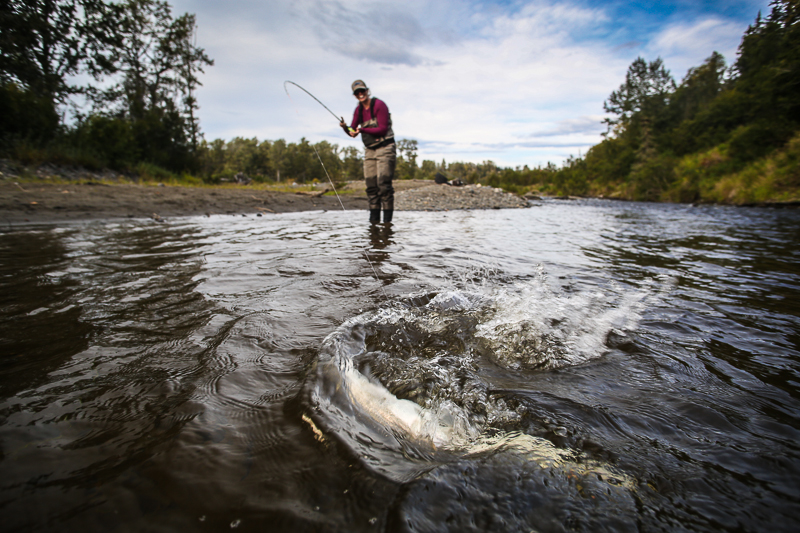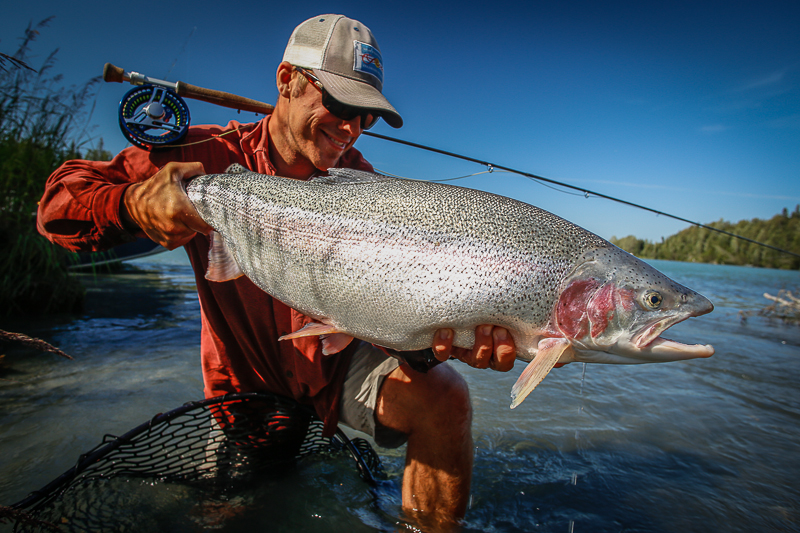If you are wanting to catch more fish with your spey rod, here is what you need to avoid.
No video selected.

Sweeping the nation faster than "Beiber Fever," spey fishing has taken over the fly fishing community. Every season there seems to be more and more long rods lining the river banks, and with good reason. Simply put, spey fishing is fun. It's fun to cast, fun to learn, offers up some exciting strikes, and is just another effective tool to have out on the water. Effective when used properly, anyways.
The complexities in both casting styles and gear selection that spey anglers need to sort through is mind boggling. Sink tips, versi-tips, scandi lines, skagit lines, long belly, short belly, running lines, and shooting heads are just a few of the choices that clog the mind of the angler, distracting them from fishing effectively. Here are the top three faults that many spey anglers are challenged with.
1. Continue To Fish Only One Type Of Spey Line
Undoubtedly, Skagit lines are extremely versatile. They are a great tool for throwing heavy flies and sink tips effectively, and allow for decent casting even with imperfect technique.
While there are many situations where Skagit lines shine, do not get caught in the mental rut of thinking that it is the best line for all situations. Often in soft or shallow water a sink tip or heavy fly is not necessary. Can you use a Skagit line in these situations? Yes. Is it ideal? Not necessarily. Scandi lines generally suit these water conditions better. The presentation is softer, you can make long distance mends easier, and controlling the swing is simpler.
Fly lines should be seen in the same light as your tool bench. There are tools specifically made to be effective in certain situations. You wouldn't use a hammer to put in a screw, would you? Diversify your line selections, and find yourself putting more tails to hand.
2. Never Adjust Your Cast
Repeating the same cast over and over, without adjustment, is the deadliest of the spey casting sins. Not adjusting your drift is a common flaw amongst beginners and experienced anglers alike. The mental concentration required to make the cast can be overwhelming and distracting, taking focus away from the drift itself. Fishing through a run using only one type of cast is rarely an effective option.
Take a few seconds before you cast and analyze your last drift. Did you feel confident that it was in the zone? What can you change to get it there? Do this after each step downriver, or be doomed to repeat the past. Insanity is defined as doing the same thing over and over, expecting a different result. Don't be an insane angler, be an adaptable one.
3. Always Use A Spey Rod
At one point in time, all anglers are faced with a choice; fish a method that is more effective, or fish the way that you like the most. Sometimes, the desire to fish with a spey rod is overshadowed by the desire to actually catch a fish. If you find yourself in this situation, remember that all river conditions are not created equally. Spey rods are not always the most effective way to catch more fish. If it is success in numbers you are searching for, remember that there is often more than one way to skin a cat.
Lee Kuepper is professional guide now calling the Kenai River home. He is a co-owner of Alaska's Angling Addiction, chasing the Kenai's fabled rainbow trout on a regular basis. He is also a member of Loop USA's prostaff and a Certified Fly Casting Instructor through the FFF.
on Wednesday, 04 March 2015.



